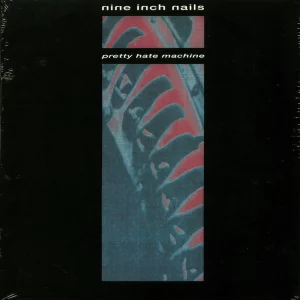Published on Sep 25, 1997
In recent days, I’ve been chatting with “Eric E5S16” (sorry,
Eric, but I don’t know your last name) who runs a similar site to
ours. He and I share the same love of music, and we’ve been using
each other as springboards for ideas and future featured albums. A
few days ago, Eric e-mailed me to ask my opinion of Nine Inch
Nails.
It just so happened that I had my copy of the band’s debut
release
Pretty Hate Machine in my car. So…
road trip!
.
For a first effort (especially one that redefined industrial
music), Trent Reznor did quite well. However, there are times that
one wishes that the album was a little angrier than it is.
Part of the problem I’m having is that I continually weigh
Pretty Hate Machine against other albums in Nine Inch
Nails’s catalog – and that really isn’t fair of me. But when the
first thing you hear from the band is their 1992 EP
Broken, it’s very hard not to make comparisons. So, let’s
take this review with a grain of salt.
The album kicks off solidly with “Head Like A Hole,” which
features Reznor – as it does for most of the album – somewhat
tuneful. His singing still goes a tad flat, but when he needs to be
in tune, he hits it perfectly. Whether Reznor is singing about
money controlling someone or another person playing that role I
can’t be positive – you could translate the song both ways. But it
was a wake-up kick in the ass for a stagnating music industry at
the time.
Most of the first side of
Pretty Hate Machine continues in the same vein. “Terrible
Lie,” another song that lives on alternative radio, was a solid
followup. Reznor, playing all the instruments himself, has to share
the credit with the other four producers assisting him – including
Flood. Without their assistance, this may still have sounded like
Nine Inch Nails, but I think the power would have been somewhat
weakened.
I especially like the throbbing bass line in “Sanctified,” which
dares to create a funk groove in industrial music. However,
Reznor’s first stab at a ballad, “Something I Can Never Have,”
really fails to do anything for me. (For that matter, I thought
people made a big deal of “Hurt,” the song which really broke
Reznor into the mainstream two albums later.) It’s here that I wish
Reznor was a little angrier – something which may sound funny
considering the darkness the lyrics already have.
The second side of
Pretty Hate Machine is where the problems lie. Reznor is not
able to keep the momentum going that he started. “Sin” is a decent
track, as is “That’s What I Get,” but for the most part, side two
pales in comparison. Sign number two as to why I wish there was
more anger here.
Maybe part of the anger heard in later Nine Inch Nails releases
was thanks in part to a lawsuit Reznor filed against TVT, claiming
they were not giving him the artistic and financial freedom he was
promised. TVT refused to let him out of the contract, causing
Reznor to tour for almost three years in support of
Pretty Hate Machine. (Some say this is why the album broke
out so well.) But by the time Reznor did release new product, he
was pissed with a capital “P”.
Pretty Hate Machine is a decent enough primer for those not
familiar with Nine Inch Nails, but in some senses it may be getting
the listener ready for an even ruder wake-up call when the one-two
punch to the gut of other albums eventually hits. Whatever the
case, I’ll be interested to hear what Eric thinks.
